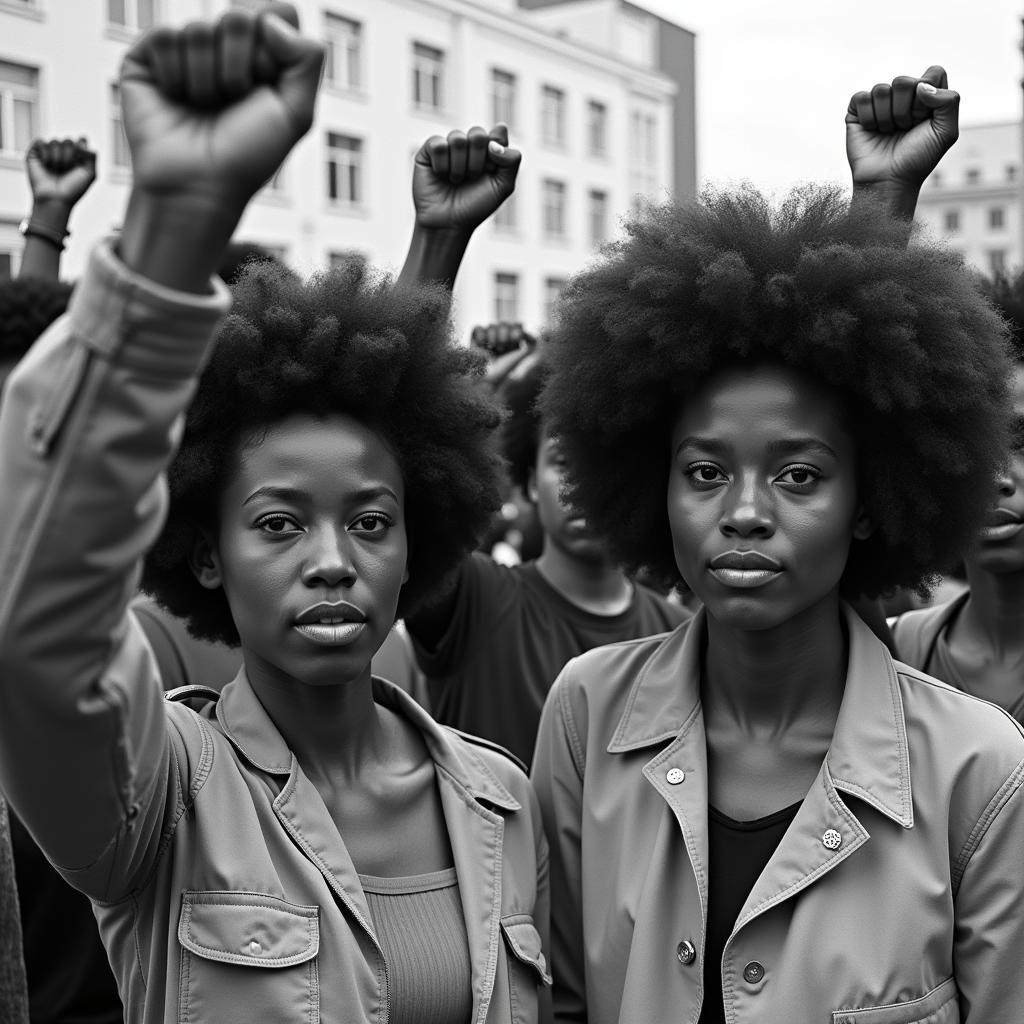The Power and Politics of 1960s African American Hairstyles
The 1960s marked a period of significant social and political change for African Americans, and their hairstyles became powerful symbols of identity, resistance, and empowerment. From the Afro to cornrows, these styles went beyond mere fashion statements; they represented a reclaiming of cultural heritage and a rejection of Eurocentric beauty standards.
The Rise of the Afro: A Symbol of Black Pride
At the forefront of this cultural shift was the Afro, a hairstyle that would become synonymous with the Black Power movement. Before the 1960s, African Americans often felt pressured to conform to white beauty ideals, straightening their hair with chemical relaxers or hot combs. The Afro, with its natural texture and voluminous shape, challenged these norms and became a powerful symbol of Black pride and self-acceptance.
 1960s Afro Hairstyle
1960s Afro Hairstyle
Inspired by prominent figures like Angela Davis, Jimi Hendrix, and Nina Simone, the Afro signified a rejection of assimilation and a celebration of Black beauty in its natural form. It became a visual statement of Black consciousness and a symbol of resistance against racial oppression.
Beyond the Afro: Exploring the Diversity of Black Hair
While the Afro reigned supreme, the 1960s also witnessed a resurgence of other traditional African hairstyles. Cornrows, once associated with rural life and poverty, were embraced by Black women as a way to express their heritage and creativity. Intricate braiding patterns, often adorned with beads and cowrie shells, became increasingly popular, showcasing the versatility and beauty of Black hair.
 Intricate Braided Hairstyles of the 1960s
Intricate Braided Hairstyles of the 1960s
These hairstyles were not simply about aesthetics; they were a form of cultural expression and communication. The way Black people styled their hair sent a message about their identity, their beliefs, and their place in society.
The Legacy of 1960s Hairstyles
The impact of 1960s African American Hairstyles continues to resonate today. They paved the way for greater acceptance of natural hair and challenged long-held notions of beauty. The movement also sparked a dialogue about the politics of hair and the ways in which Black hairstyles have been stereotyped, discriminated against, and even appropriated.
From the runways of fashion shows to everyday life, the influence of these iconic styles is undeniable. They serve as a reminder of the power of self-expression and the importance of embracing one’s cultural heritage.
FAQs:
-
What is the significance of the Afro hairstyle? The Afro emerged as a powerful symbol of Black pride, self-acceptance, and resistance against Eurocentric beauty standards during the Civil Rights Movement.
-
What other hairstyles were popular among African Americans in the 1960s? Beyond the Afro, cornrows experienced a resurgence, embraced for their cultural significance and versatility.
-
How did these hairstyles reflect the social and political climate of the time? These hairstyles became visual expressions of Black consciousness, challenging societal norms and celebrating Black identity amidst the fight for equality.
-
What is the legacy of these hairstyles today? The impact is still felt today, as they paved the way for greater acceptance of natural hair and sparked conversations about the politics surrounding Black hair.
-
Where can I find more information about African American hairstyles? Explore online resources dedicated to Black hair history and consider reading books or watching documentaries on the topic.
For further insight into the transformative power of African ingredients, you might find these articles interesting:
These articles provide valuable information about the potential benefits and considerations of incorporating African botanicals into your wellness routine.
Don’t hesitate to reach out to our dedicated customer support team at +255768904061 or [email protected] for any inquiries or assistance. We’re available 24/7 to help you navigate the rich tapestry of African Life, from its vibrant culture and history to its remarkable natural treasures. You can also visit us at Mbarali DC Mawindi, Kangaga, Tanzania.
